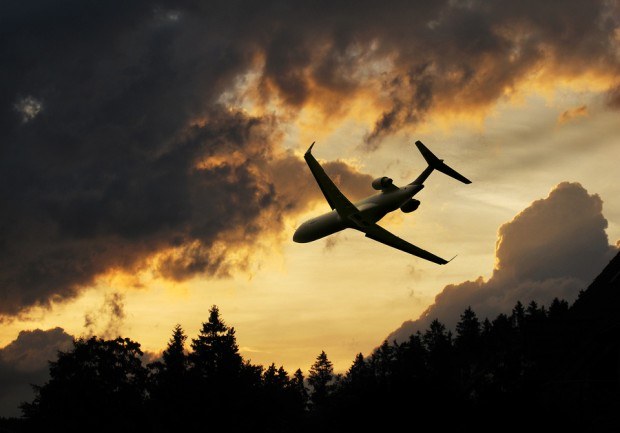Three fatal airline crashes in a week mean 2014 is shaping up to become the worst year in almost a decade for passenger fatalities.
The crash of a McDonnell Douglas MD-83 aircraft on the fringes of the Sahara desert yesterday follows the loss of an ATR-72 turboprop in storms in Taiwan on July 23 and the downing of Malaysian Air Flight MH17 over Ukraine last week.
The African incident involving a plane operating for Air Algerie takes the 2014 toll to 680 travelers, assuming those on the jet died, higher than 12-month totals for the past three years, according to air-safety consultants at Ascend Worldwide. With five months remaining, a further 111 deaths would make this the most lethal year since 2005, when 916 lives were lost, though Ascend’s head of safety Paul Hayes said the direction in accident-related fatalities is still down.
“It’s important to look at the long-term trends,” Hayes said in an interview. “What looks likes a ‘good’ or ‘bad’ year —let alone just seven months—by itself means nothing. Fatal accidents are now so rare that one or two more can completely change the numbers.”
Fatalities in 2014 involving aircraft seating more than 14 people have come in six incidents, compared with 162 deaths in 10 incidents in 2013, he said. Only three of this year’s events appear to be accidents of the kind that would ordinarily be included in Ascend’s safety analysis, which excludes war and terror-related losses beyond airlines’ control, Hayes said.
Safety Numbers
About 100,000 flights a day land without incident worldwide, the International Air Transport Association said in a statement. In 2013, passenger trips on airlines exceeded 3 billion, according to IATA.
“It’s a black week for air transport,” Air France-KLM Group Chief Executive Officer Alexandre de Juniac said today in an interview in Paris. “I can understand that passengers can be worried, but I have to tell them that air transport is very safe, probably the safest” means of travel.
The disappearance of Malaysian Airline System Bhd. Flight MH370, in which a Boeing Co. 777 doubled back on its route from Kuala Lumpur to Beijing and vanished over the Indian Ocean, may have involved pilot malpractice, experts have said. Some 227 passengers were traveling on the March 8 flight.
Black Boxes
Malaysian Air Flight MH17, which crashed a week ago yesterday, killing all 283 passengers, was probably downed by a ground-to-air missile strike in eastern Ukraine, U.S. authorities have said. Black-box flight recorders from the plane, also a 777, are undergoing analysis in the U.K., with the examination of bodies also under way as experts seek evidence of the rocket attack.
Another incident classified as non-accidental saw a woman killed on a Pakistan International Airlines flight after the Airbus Group NV A310 jet with 196 passengers aboard came under fire, possibly from AK-47 assault rifles, while landing in the northwestern city of Peshawar. The incident came two weeks after a Taliban attack on Pakistan’s biggest airport in Karachi killed 36 people, none on aircraft.
The three other fatal events involved crashes more typical of airline accidents over the decades, with 44 passengers killed this week when a TransAsia Airways Corp. ATR-72 came down as it prepared to land on Taiwan’s outlying Penghu Islands.
The turboprop was on a second approach to Magong Airport when it went down amid heavy rains from tropical storm Matmo.
Some 15 travelers died when a Nepal Airlines de Havilland Canada DHC-6 Twin Otter turboprop plane crashed into jungle on a 7,000-foot hillside in poor weather on Feb. 16.
‘Difficult Weather’
In yesterday’s incident, about 110 passengers, 50 of them French, and six crew were aboard the Air Algerie flight from Ouagadougou, Burkina Faso, to Algiers that crashed “in particularly difficult weather,” according to French transport minister Frederic Cuvillier. He said there was no chance of survivors, while a ground-to-air missile was ruled out.
The plane was lost over the northern Sahel region yesterday, and its wreckage was found about 50 kilometers (30 miles) inside the territory of Mali, according to Burkinabe authorities.
The plane’s flight crew asked air traffic controllers for permission to divert to avoid a storm about 40 minutes after takeoff, Burkina Faso Transport Minister Jean Bertin Ouedraogo told reporters.
“These three catastrophes involved different companies, totally different origins, different environments and different aircraft,” Air France KLM’s de Juniac said. “So you cannot draw a general conclusion that air transport is less safe or should be avoided.”
(With assistance from Kari Lundgren in London, Simon Gongo in Ouagadougou, Tim Culpan in Taipei, Richard Weiss in Frankfurt and Andrea Rothman and Caroline Connan in Paris.)





















 Artificial Intelligence Is Rewriting the Rules for Commercial Lines
Artificial Intelligence Is Rewriting the Rules for Commercial Lines  Executives on the Move at Liberty Mutual, Cowbell, W. R. Berkley
Executives on the Move at Liberty Mutual, Cowbell, W. R. Berkley  First Atlantic Hurricane Forecast for 2026 Suggests Season Close to 30-Year Norm
First Atlantic Hurricane Forecast for 2026 Suggests Season Close to 30-Year Norm  California Workers Comp Combined Ratio for 2024 Highest in 20-Plus Years
California Workers Comp Combined Ratio for 2024 Highest in 20-Plus Years 
